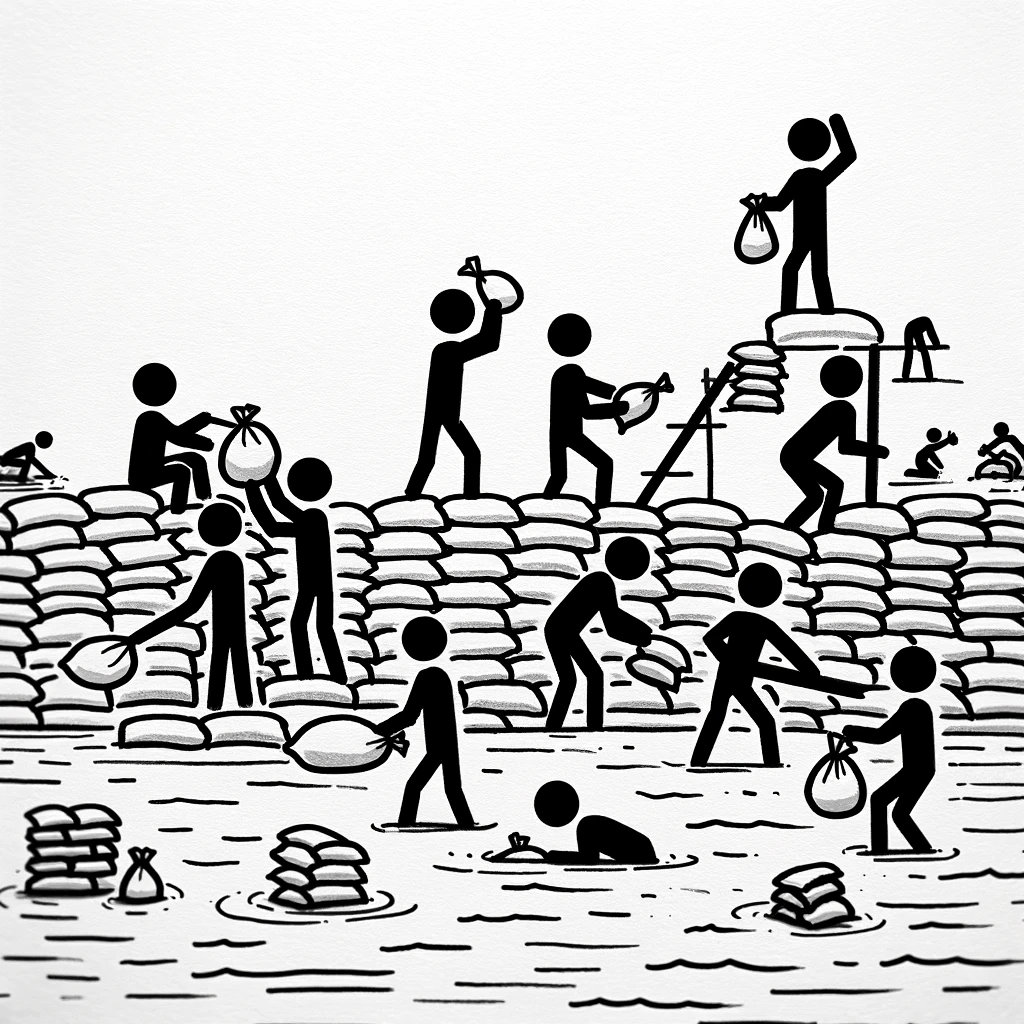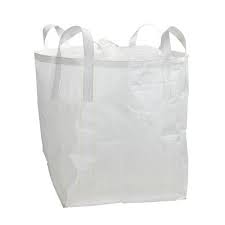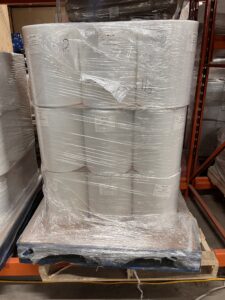Highlights
- How much a sandbag weighs depends on the size of the bag, the fill material, and how full the bag is. But, a standard 14-inch-by-26-inch sandbag typically weighs 30-50 pounds when properly filled.
- Sandbags come in a variety of sizes, from 13-inch-by-24-inch bags to heavy-duty 80-inch-by-48-inch bulk totes. They also come in biodegradeable materials. The best sandbag for your situation will depend on your goals.
Sandbag weight and size will meaningfully impact all aspects of your flood barrier construction project or building sandbag walls: how you fill them, how you transport them, what kind of equipment you require, and how many sandbags you will need to create a proper flood wall.
Or, maybe you’re not using sandbags for flooding at all! Sandbags are great as soccer goal anchors, for mooring practice cages, securing youth size football goals, and so much more. Burlap bags filled with sand are frequently used in the oil and gas industry to pad pipelines and for ballast during construction projects. They’re great for landscaping projects and erosion control because they either biodegrade, in the case of jute or burlap bags, or can be quickly found and removed, unlike metal ground pegs.

Whatever your plan, sandbags are convenient and cheap.
What Sizes Do Sandbags Come In?
The two most common sandbag sizes are:
- 14 inches by 26 inches
- 18 inches by 30 inches
These standard sandbag sizes are most common because they’re large enough to divert water effectively and can be filled quickly when constructing a full sandbag wall, but are still small enough for one person to move by hand.
You can also find sandbags smaller and larger than this.
We carry biodegradable burlap sandbags measuring 13 inches by 24 inches, and you’ll also find tubular sandbags that are just 8 inches in diameter and 36-48 inches long for specific applications.

So, How Much Does a Sandbag Weigh?
The most common sizes of sandbags will weigh 30 to 50 pounds when filled.
Although an overfilled sandbag can hold 60 to 75 pounds…what’s the point? An overfull sandbag simply won’t do its job well, and it’s too heavy to move around effectively. If your sandbag is stuffed to the gills, it won’t mold to the ground or its surroundings, which is central to how a properly built sandbag wall works. At one-half to two-thirds full, this allows room for the sand to shift within the bag, makes sandbags easier to stack, and forms a better seal for diverting water.
If you need something more heavy duty, you can buy Flexible Intermediate Bulk Containers (FIBC) made of polypropylene. Often called bulk tote bags or bulk bags, these are great for industrial applications and the bulk filling of sand for flood prevention.
Some FIBCs can hold 1,000 to 2,200 pounds of sand!

The Math on Sandbag Weight
While we’ve weighed sandbags in our shop in the past, let’s do a little exercise on sandbag weight based on a standard 14″x26″ sandbag.
In a perfect cylinder, this is about 4,000 cubic inches of space, or 2.2 cubic feet. Of course, these bags are not sewn in a perfect cylinder, so we’ll assume a sandbag has a true volume potential of closer to 1.1 cubic feet.
Dry, loose sand weighs around 90 pounds per cubic foot, meaning that at half full, your sandbags is getting pretty heavy!
While this is little more than a fun exercise, we find that our sandbag customers are generally using 30-40 pounds of sand per sandbag, filling them to the halfway point or a little beyond. The key is that this allows the bag to be quite malleable, perfect for conforming to the terrain and creating the pyramid shape that gives sandbag walls their strength and stability.
For reference, a cubic yard of dry, loose sand weighs 1,400 to 1,600 pounds and can fill 50+ sand bags. By contrast, wet densely packed sand can weigh well over 2,000 pounds per cubic yard!
Moisture makes a big difference when it comes to sandbag weight.

Sandbag Materials Explained
Most sandbags are made from woven polypropylene. Higher-quality sandbags will also have some UV resistant properties to improve longevity in direct sunlight. UV-resistant sandbags are a good option for anyone who plans to leave a barrier in place for more than a year, or for those using them in outdoor sporting scenarios.
Burlap bags are another great option for those looking for something that will biodegrade with time. Made from jute, a natural material, these biodegradable sandbags are an inexpensive option for landscaping, construction, and more.
Other Sandbag Questions
How much does a wet sandbag weigh?
Standard sandbags can weigh 30 to 50 pounds, while wet sandbags can weigh 60 pounds and up once soaked. Wet sandbags that are overfilled can, of course, weigh even more.
How much does an army sandbag weigh?
A common question, the army (including the Army Corps of Engineers) deploys the standard 14″x26″ sandbag, which will weigh 30-40 pounds when properly filled.
How many sandbags do I need?
While online calculators can help you estimate the exact number of sandbags you need, a good rule of thumb is that it takes about 150 standard 14-inch-by-26-inch sandbags to build a wall one foot tall and 25 feet in length.
How big is an FIBC tote?
FIBC totes, which are also sometimes used in creating large-scale sandbag walls are usually just over one cubic yard in volume. A 35″ x 35″ x 42″ FIBC tote fits well on standard pallets and is the most common tote in use today.




